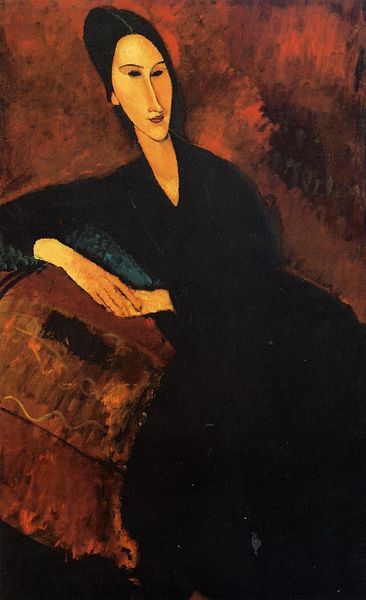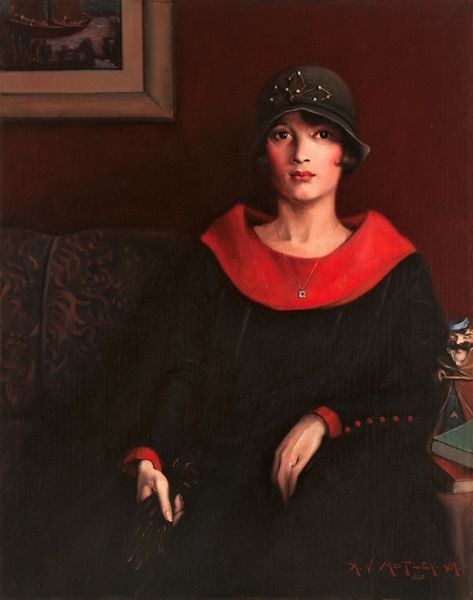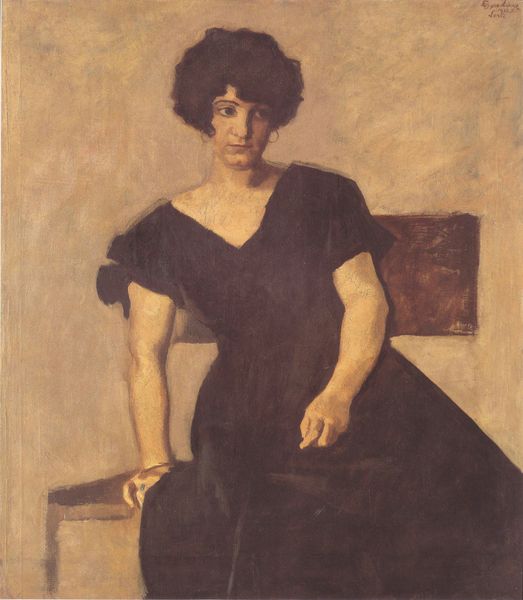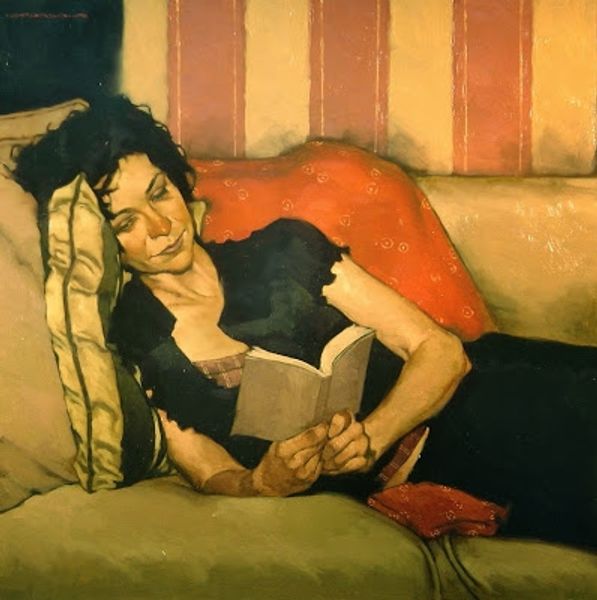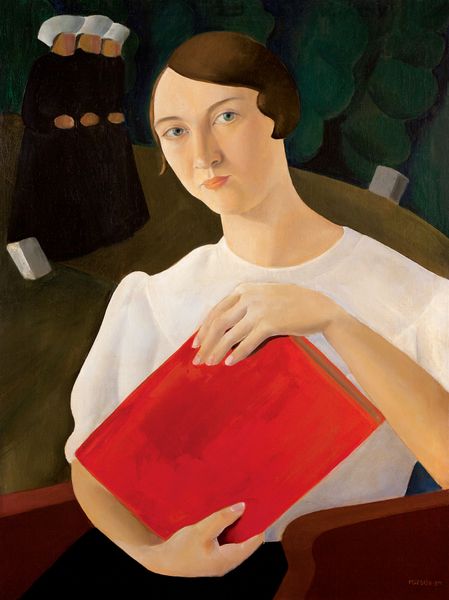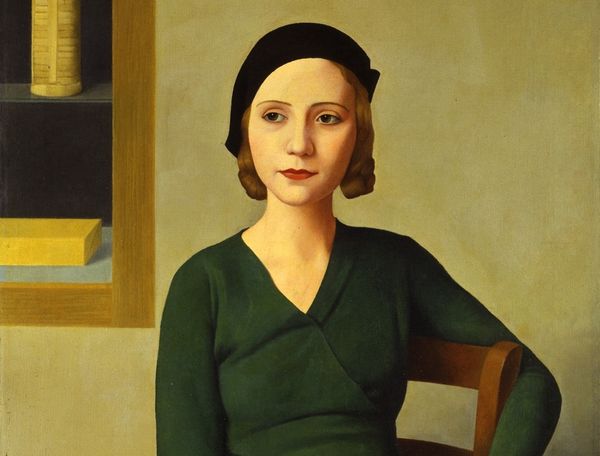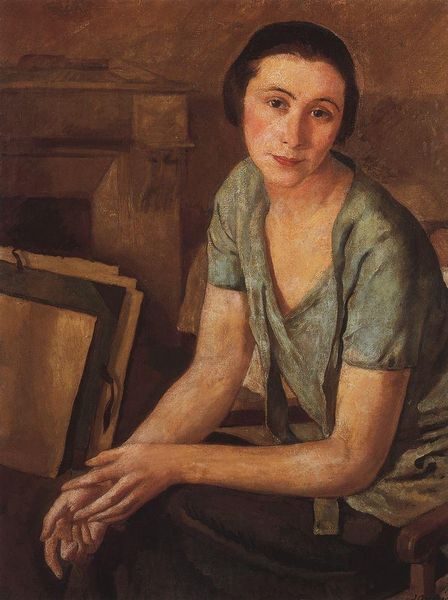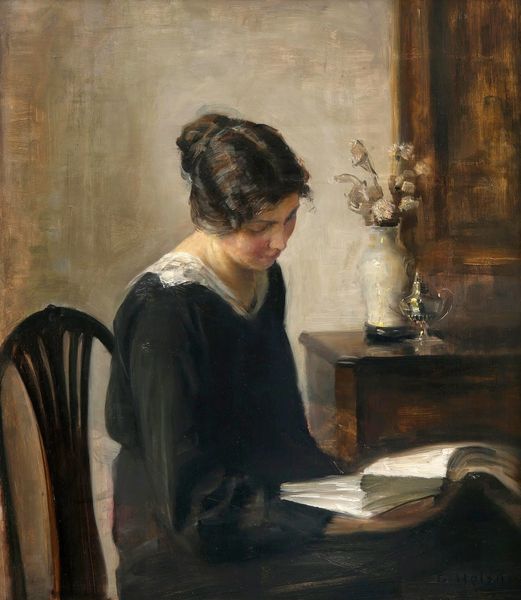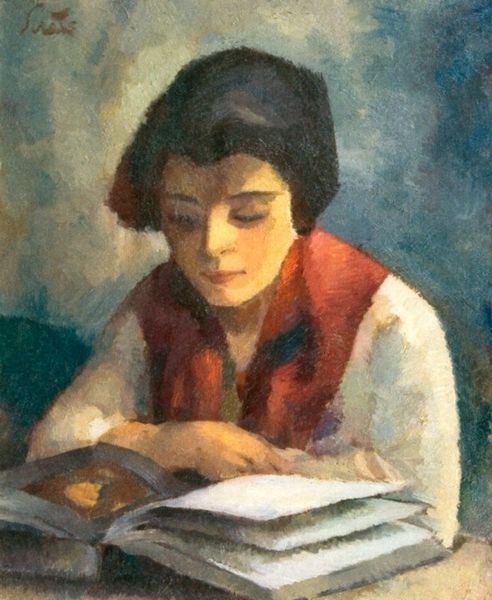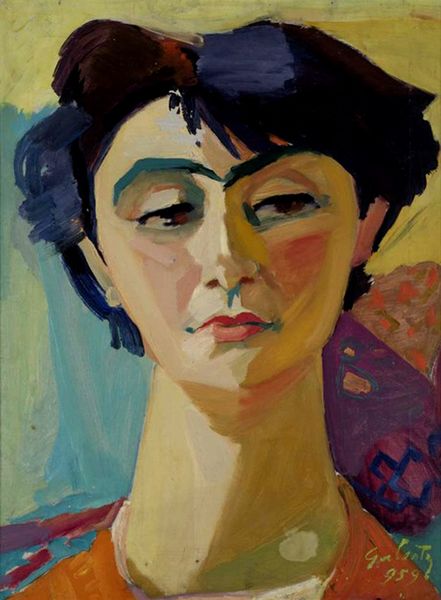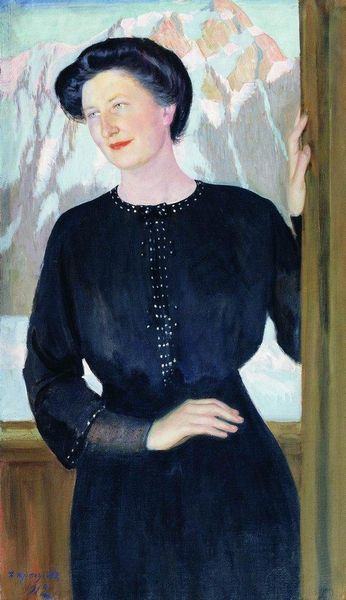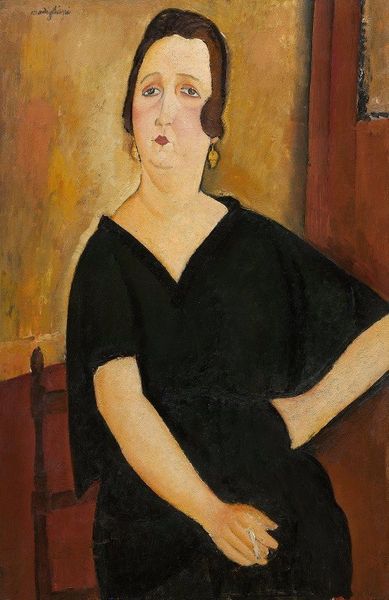
oil-paint
#
portrait
#
oil-paint
#
figuration
#
oil painting
#
intimism
#
modernism
Dimensions: 92 x 74 cm
Copyright: Andre Derain,Fair Use
Editor: This is Andre Derain’s "The Cup of Tea," painted in 1935. It's an oil painting currently residing in the Georges Pompidou Center in Paris. There's a striking stillness to the composition. What visual elements strike you most? Curator: The most immediate element is the play of contrasts: light versus shadow, the angularity of the book versus the soft curve of the armchair. The color palette is limited, focused mainly on somber dark tones and bright, almost dissonant, reds in the cushion and the sitter's lips, thereby disrupting the unity. The brushstrokes are clearly visible, adding to a sense of texture, yet somewhat constrained, suggesting a formal, controlled atmosphere. Do you notice how Derain frames the woman's face with her hand? Editor: Yes, the way her hand and gaze meet feels very intentional. It gives a strong sense of psychological introspection, a stark difference with the warmth usually expected of the intimist style. What is the effect of the stark composition? Curator: The formal choices contribute to a sense of distance, an almost theatrical staging. It pushes this intimate scene into a carefully constructed tableau, far from snapshot realism. What does the relationship between the flat planes and perspective suggest to you? Editor: The slightly flattened perspective and sharp angles remind me of cubist influence. It removes any comfortable sense of depth, as though she is existing in two dimensions, while her presence implies she occupies our world. This heightens that strange tension. Curator: Precisely. It underscores the artifice of the work itself. A formal interplay of line, form, and color taking precedence over traditional representation. I was originally convinced that the figure, isolated and framed, alluded to social issues and class divides. The careful analysis of pictorial syntax instead pushes me toward abstraction and structural unity, revealing the painting’s meaning is intrinsic. Editor: That's fascinating! I initially interpreted the painting one way, and now it feels entirely different after analyzing its components with you. Thank you!
Comments
No comments
Be the first to comment and join the conversation on the ultimate creative platform.

